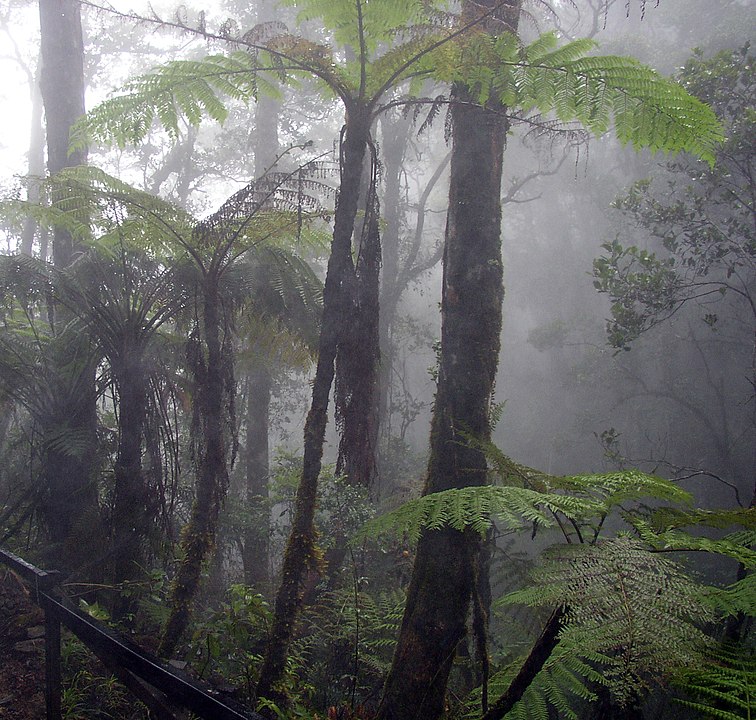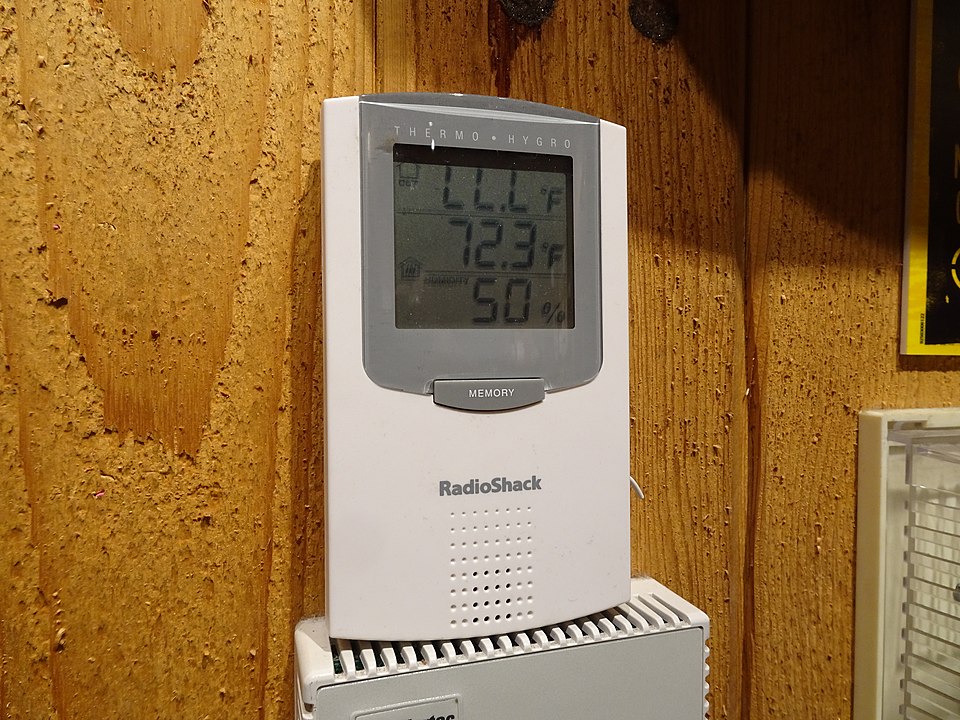
I learned this today. Why are some places more humid than others? It is because they are closer to a large, warm body of water, which causes warm winds and warm air can carry more water vapor than cold air.
What is humidity? Humidity is the concentration of water vapor in the air. The air around us consists of 78 percent nitrogen, 21 percent oxygen, and the rest is made up of things like carbon dioxide, neon, hydrogen, and some other gases. The air also contains water that it holds as vapor.
Air can hold a certain amount of vapor and that changes depending on the temperature of the air. When air is warmer, it has more energy and that extra energy makes it more likely that water molecules will be turned into water vapor. A cubic meter of air at 30℃ can hold 28g of water and a cubic meter at 8℃ can hold 8g of water. This is the point of saturation for the air. It cannot hold any more water than that. As the energy of the air gets lower, the water vapor loses energy and it turns back to water, which the air can’t hold.
So, how does that connect to humidity? There are three ways of talking about humidity. There is relative humidity, absolute humidity, and specific humidity. When you watch the news forecast and they say the humidity is 50%, that is the relative humidity. The 50% is the relative level of the humidity compared to the total amount of water vapor the air can hold. So, at 30℃, assuming the same altitude, a 50% relative humidity would mean that the air holds 14g of water vapor because 100% would be 28g. That is why the relative humidity can be a little misleading. On a day where the temperature is 8℃, a relative humidity of 50% would only be 4g of water, which would feel far different to the 14g of water vapor.

Absolute humidity is the amount of water vapor that the air is holding. It is usually given in grams per cubic meter. This would be a better metric for figuring if a day will be uncomfortable or not. Specific humidity is the ratio of water vapor mass to the unit mass of the moist air.
When talking about humidity, the dew point is a more accurate method. The dew point is the temperature the air must cool to for dew to form. Dew forms when the air is saturated with moisture. The dew point temperature tells us the absolute quantity of water vapor that is in the air. The higher the dew point is, the more water vapor is in the air and the more humid it will be. If the temperature is 0℃ and the dew point is 0℃, that will give a relative humidity of 100%, but it won’t feel uncomfortable. If the temperature is 26℃ and the dew point is 15℃, the relative humidity is only 50% but it will be far more uncomfortable. As the dew point gets higher, the more uncomfortable it becomes. The world record for the highest dew point was 35℃ in Saudi Arabia in 2003. The air temperature was 42℃.
Why is a high relative humidity on a day with a high temperature so uncomfortable? When we get hot, our bodies have several systems to cool us down. We use our large surface area to lose heat and we also sweat. The sweat evaporates off our body, cooling us down. To evaporate, the water in the sweat needs energy and it gets that energy from our skin. Heat is just excess energy so when the sweat evaporates it takes this energy away and cools us down. On a very humid day, the air is already full of water vapor and the sweat cannot evaporate.
So, why are some places far more humid than others? A place will be more humid if there is a warm body of water near them. For example, the east coast of America is more humid than the west coast. The west coast is next to the Pacific Ocean which has cold currents coming down from the north. The winds that blow off this cold ocean are colder and thus pick up less moisture. The east coast is next to the Atlantic Ocean which has warm currents coming up from the equator. The winds that blow off this warmer ocean are warm and pick up more moisture.
A country like Japan is humid because it is in an area of high pressure called the North Pacific High. This is a semi-permanent high-pressure system in the Pacific Ocean. It moves around throughout the year, but it hovers over Japan in the summer months. It causes lots of hot air to accumulate over Japan, which picks up a lot of moisture, causing the high levels of humidity in the country.
So, why are some places more humid than others? Because they are near to a warm body of water with a warm wind blowing over them. This warm wind picks up more water vapor, making high humidity. And this is what I learned today.
Sources:
https://www.pbs.org/newshour/science/8-things-didnt-know-humidity
https://www.scientificamerican.com/article/what-causes-humidity/
https://en.wikipedia.org/wiki/Humidity
https://en.wikipedia.org/wiki/Dew_point
https://www.lsop.colostate.edu/wp-content/uploads/sites/6/2014/10/WhyDoesWarmAirHoldMoreWater.pdf
https://www.livescience.com/43269-what-is-dew-point.html
https://www.data.jma.go.jp/gmd/cpd/longfcst/en/tourist_japan.html
